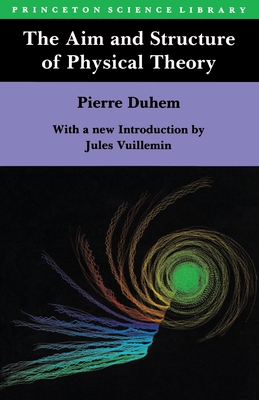What do you think?
Rate this book


513 pages, Kindle Edition
First published January 1, 1906
Now these two questions -- Does there exist a material reality distinct from sensible appearances? and What is the nature of reality? -- do not have their source in experimental method, which is acquainted only with sensible appearances and can discover nothing beyond them. The resolution of these questions transcends the methods used by physics; it is the object of metaphysics.He argues it is autonomous, though. His engineer friend Eugène Vicaire criticized Duhem's postivistic conception of the relation of physics to metaphysics as "the poison of skepticism." Vicaire wrote:
Therefore, if the aim of physical theories is to explain experimental laws, theoretical physics is not an autonomous science; it is subordinate to metaphysics.
It is not true that when constructing its theories, positive science has as its object simply to classify experimental laws; its proper object is the discovery of causes. To deny this is to maintain a suspect doctrine of positivism, and one capable of leading to skepticism. That doctrine, condemned by the whole tradition of great physicists, is dangerous, for it destroys scientific activity.Pages 207-209 of William A. Wallace's excellent The Modeling of Nature: Philosophy of Science and Philosophy of Nature in Synthesis contain a good critique of Duhem's philosophy of science.
The legitimate, sure and fruitful method of preparing a student to receive a physical hypothesis is the historical method. To retrace the transformations through which the empirical matter accrued while the theoretical form was first sketched; to describe the long collaboration by means of which common sense and deductive logic analyzed this matter and modeled that form until one was exactly adapted to the other: that is the best way, surely even the only way, to give to those studying physics a correct and clear view of the very complex and living organization of this science.In summary, as interesting as that book is—and he does an excellent job explaining how physics operates through his historical examples—I still think he has an unclear (at least it seems unclear to me) notion of what exactly the role of metaphysics is in relation to modern physics. At the beginning of the book he seems to think metaphysics plays no role (he gives the historical example of Fresnel on how optics effectively "transcended" the metaphysics that inspired the theories); then he says maybe certain metaphysics can play a role; then toward the end he says metaphysics plays the role in determining what elements of physical theories one should consider fundamental. {Perhaps he is merely distinguishing the "via inventionis" ("way of discovery") from the "via resolutionis" ("way of resolution"); in the former metaphysics plays no role but in the latter it does, or vice versa?} Still, it is a very fascinating book; his attempt to show the relation between modern physics and metaphysics is noble; but his philosophy of physics (that physical theories are just equations and that all modern physics does is classify) seems to discount physics's explanatory power. Duhem has been infected with a small dose of skepticism.